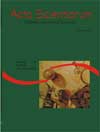Reading and writing: evaluation of well-structured compositions that deviate from the topic proposed
Abstract
One of the most depressing issues for examiners of university entrance examination composition is the disclassification of students who despite presenting well-structured texts deviate completely from the topic proposed by writing down a kind of “ready-made composition”. On this occasion the evaluation of the topic points to the evualuation of the student’s reading competence of the thematic proposal included in a text intended as stimulus and guide to the composition writing. It is most depressing when this disclassified composition is a well-structured text concerning language and content. This situation raises the following questions: a) How to evaluate these compositions? b) Is it possible to separate reading evaluation from wrinting evaluation by disregarding the concept of mother tongue teaching which is the pedagogical guidance for Brazilian schools? The aim of this paper is to answer these questions by reporting the cumulative experience of research and practice in entrance examination evaluation.Downloads
Download data is not yet available.
Published
2008-07-02
How to Cite
Menegassi, R. J., & Zanini, M. (2008). Reading and writing: evaluation of well-structured compositions that deviate from the topic proposed. Acta Scientiarum. Human and Social Sciences, 22, 25-31. https://doi.org/10.4025/actascihumansoc.v22i0.4112
Issue
Section
Literature and Linguistics
DECLARATION OF ORIGINALITY AND COPYRIGHTS
I Declare that current article is original and has not been submitted for publication, in part or in whole, to any other national or international journal.
The copyrights belong exclusively to the authors. Published content is licensed under Creative Commons Attribution 4.0 (CC BY 4.0) guidelines, which allows sharing (copy and distribution of the material in any medium or format) and adaptation (remix, transform, and build upon the material) for any purpose, even commercially, under the terms of attribution.
Read this link for further information on how to use CC BY 4.0 properly.























